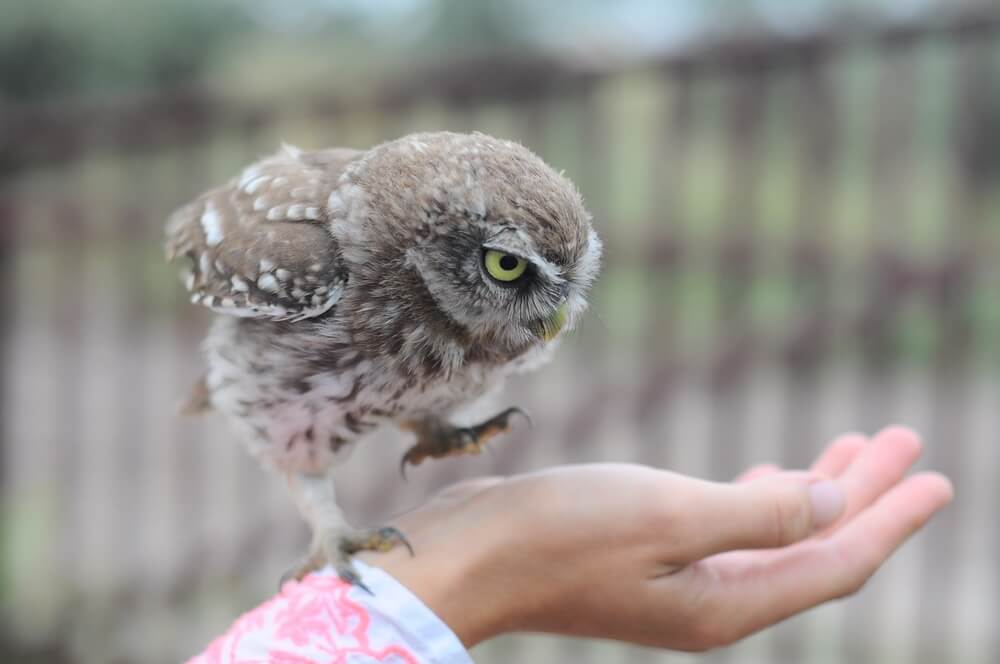Ever fantasized about residing on “Owl Drive,” serenaded nightly by the hooting of these enigmatic raptors? The reality of coexisting with owls can be both enchanting and, at times, challenging. This detailed exploration illuminates the art of attracting owls to your environs, while also providing prudent guidance for mitigating potential conflicts should these feathered neighbors prove less than welcome.
I. Creating a Verdant Haven: The Ecological Allure
Attracting owls transcends mere wishful thinking; it necessitates a strategic cultivation of a welcoming habitat. Owls, as apex predators, demand a thriving ecosystem to sustain their voracious appetites. This begins with a commitment to nurturing native flora.
A. The Importance of Indigenous Plantings
Instead of opting for exotic cultivars, prioritize the planting of indigenous trees, shrubs, and ground cover. These plants, co-evolved with local fauna, provide crucial sustenance and shelter for the small mammals and insects that constitute the bedrock of an owl’s diet. Furthermore, native plants require less intensive maintenance, reducing the need for pesticides and herbicides that can inadvertently harm avian populations.
B. Limiting Pesticide and Herbicide Use
The deleterious effects of pesticides and herbicides on owl populations are well-documented. These chemicals not only directly poison owls, but also disrupt their food chain by decimating the populations of rodents and insects upon which they rely. Embrace integrated pest management (IPM) strategies, which prioritize preventative measures, biological controls, and targeted treatments to minimize the need for broad-spectrum chemicals. Consider alternatives such as introducing beneficial nematodes or utilizing diatomaceous earth to control garden pests.
C. Providing Roosting and Nesting Opportunities
Owls require suitable roosting and nesting sites to feel secure and establish territories. Mature trees with dense canopies offer ideal roosting perches, providing shelter from the elements and protection from potential predators. Consider leaving dead trees, or snags, standing (provided they do not pose a safety hazard), as these often contain cavities that owls can utilize for nesting. Alternatively, constructing and installing owl boxes can provide artificial nesting sites in areas where natural cavities are scarce. Ensure the box is appropriately sized for the target species and is mounted in a secure location away from potential disturbances.
II. Understanding Owl Diets and Supporting Prey Populations
An owl’s presence is inextricably linked to the availability of prey. Cultivating an environment that supports robust populations of rodents, insects, and other small animals is paramount to attracting and retaining these avian predators.
A. Encouraging Rodent Habitats
While the prospect of attracting rodents may seem counterintuitive, these creatures are a crucial food source for many owl species. Creating areas of tall grass or allowing leaf litter to accumulate provides ideal habitat for voles, mice, and other small mammals. Avoid using rodenticides, as these toxins can bioaccumulate in owls, leading to secondary poisoning. Instead, rely on natural predators like owls to control rodent populations.
B. Promoting Insect Diversity
Insects constitute a significant portion of the diet of some owl species, particularly smaller owls like screech owls. Encourage insect diversity by planting flowering plants that attract pollinators, leaving patches of bare ground for ground-nesting insects, and providing sources of water for insects to drink. Avoid using insecticides, which can indiscriminately kill both beneficial and harmful insects.
C. Water Availability
Access to fresh water is essential for all wildlife, including owls. Providing a bird bath, a small pond, or even a shallow dish of water can attract owls and other birds to your yard. Ensure the water source is clean and is regularly replenished, especially during dry periods.
III. Mitigating Potential Conflicts: When Owls Become Unwanted Guests
While the presence of owls is often celebrated, there are instances where their behavior may become problematic. Predation on domestic animals, territorial disputes, and excessive noise can disrupt the peace of a neighborhood. Understanding how to address these issues humanely and effectively is critical.
A. Protecting Domestic Animals
Small pets, particularly cats and small dogs, can be vulnerable to owl predation. To protect your animals, keep them indoors, especially at dusk and dawn, when owls are most active. If outdoor access is necessary, supervise your pets closely. Consider using predator-resistant enclosures or fencing to create a safe outdoor space for your animals.
B. Addressing Territorial Disputes
Owls can be fiercely territorial, and may engage in aggressive behavior towards other birds or even humans if they feel threatened. If you are experiencing territorial disputes with owls, try to identify the source of the conflict and address it. For example, if the owl is targeting a bird feeder, remove the feeder or relocate it to a less conspicuous location. Avoid approaching or harassing the owl, as this will only escalate the situation.
C. Managing Noise Levels
The nocturnal hooting of owls can be disruptive, particularly if they are nesting close to residential areas. While completely eliminating owl vocalizations is impossible (and undesirable), there are steps you can take to minimize the impact of their noise. Planting dense vegetation can help to buffer sound. Talking to your neighbors and educating them about the benefits of owls can also help to foster a sense of tolerance. In extreme cases, consult with a wildlife professional to explore options for relocating the owl, although this should be considered a last resort.
IV. Fostering Coexistence: A Shared Ecosystem
Ultimately, living in proximity to owls requires a spirit of compromise and a willingness to share our environment with these magnificent creatures. By understanding their needs and behaviors, and by taking proactive steps to create a welcoming and sustainable habitat, we can ensure that the hooting of owls continues to grace our nights for generations to come.
